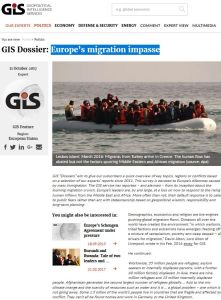Join getAbstract to access the summary!

Join getAbstract to access the summary!
Expert
Europe’s migration impasse
GIS, 2017
What's inside?
The European Union needs a sustainable strategy to deal with mass migration.
Recommendation
Worldwide in 2016, some 55 million refugees and another 60 million “forcibly displaced” migrants sought safety and respite. Quite understandably, wealthy countries such as European Union member states attract people looking for a better life. But as experts from Geopolitical Intelligence Services (GIS) point out, Europe has so far dealt with incoming refugee streams in a haphazard way, and it remains utterly unprepared to respond to future migration waves. This must change, the GIS experts agree: European leaders must both increase their countries’ ability to absorb migrants and help improve conditions in refugees’ countries of origin as part of a broader geopolitical strategy.
Summary
About the Author
Geopolitical Intelligence Services is a European research and consulting firm.



















Comment on this summary